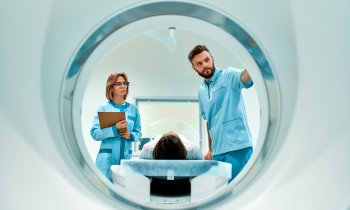Administrators struggle to find cost savings in hygiene and many other areas
‘Before each ward round my students and I wash our hands’ – so said Ignaz Philip Semmelweis in the mid-19th century, in his drive to reduce the hospital mortality rate. Today, the World Health Organisation states that ‘Clean care is safer care’ – and yet, particularly in recent times, the lack of hygiene in numerous hospitals has resulted in mortalities. Who is to blame? What can be done, apart from regular hand washing? Over the past year, these questions and many more regarding cost savings have been raised at various quality, health and hospital congresses.
Report: Anja Behringer


Along with questions about raising hygiene standards to save costs, there are also issues of quality standards, transparency and certification procedures and the economic viability of processes on a high technological level. The average patient is also changing – she/he is getting heavier, older and multi-morbid and often suffers chronic pain. The patient takes up the services of different specialists, requires new treatment methods and a large number of drugs. These days, renal artery stenosis is no contra-indication for ACE blockers and, unlike in the past, heart failure, is now an indication for beta-blockers. Such developments cost money and require transparent and efficient treatment.
Where can we save costs? Processes are an obvious choice – short distances, having all data electronically stored and networked, right down to the chef’s menu planner. Each department is set up as a separate profit centre; solar panels on the roof provide energy. Calculations for energy savings are being made in all kinds of places. Sterile materials, laundry and catering services are being outsourced, lighting is switched to LED and the remaining technology is upgraded with the most up-todate equipment. These devices obviously save energy, lower CO2 emissions and are environmentally friendly. However, first they must be bought and nobody can guarantee the point of time when they will be amortised.
Many older hospitals in particular need considerable investment, the implementation of which – assuming that financing has been successfully arranged – can severely affect day-to-day hospital operation. Patients ideally should not notice too much of any on going works, meaning the staff has to take the strain. However, the empathy of nurses and doctors is a decisive factor that contributes to the patients’ wellbeing and faster recuperation.
If you ensure a motivating and satisfying working environment you automatically save a lot of money – both the number of sick days taken by staff and the number of mistakes made during work processes reduce significantly. More and more entities in the healthcare sector are looking at saving costs by entering into business partnerships. The German medical insurer DAK, for instance, has put together the Care Guide to Pain, with the pharmaceutical company Grunenthal in an attempt to develop effective treatment approaches in pain therapy.
Other partnerships between hospitals and manufacturers have resulted from the installation of medical devices. In Germany, the Government is also trying to improve quality in the healthcare service. In the summer of 2011, the country’s parliament decided to implement a change in the Infection Protection Act to achieve an improvement in the quality of hospital hygiene. A commission for hospital hygiene and infection prevention is to be set up at the Robert-Koch Institute for this purpose. Dr Klaus-Dieter Zastrow, Director of the Institute for Hygiene and Environmental Medicine at the Vivantes Hospital in Berlin stresses that this necessitates an adequate number of qualified staff and also calls for the creation of a new role, i.e. that of a certified hospital hygienist.
Professor Uwe Frank, at the Department for Infectiology, University Hospital Heidelberg, has worked out the following calculations on this issue: Based on conservative estimates there are around four million cases of hospital-acquired infections (HAI) resulting from AMR (antimicrobial resistance) across the European Union every year, with an estimated 37,000 fatalities directly attributable to this problem. Add to this around 16 million additional in-patient hospital days annually and the direct yearly costs run to around €5.5 billion – an average of €334 a day (Source: ECDC Annual Epidemiological Report 2008 and Monnet DL, ECDC). This does not include the follow-on costs arising from patients not being able to work, or the possible long-term effects or indirect effects on society through loss of productivity, or even death. This is only one example of hospital administrators’ cost concerns.
22.02.2012







